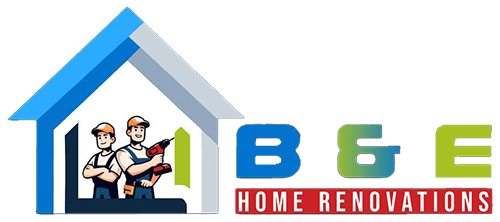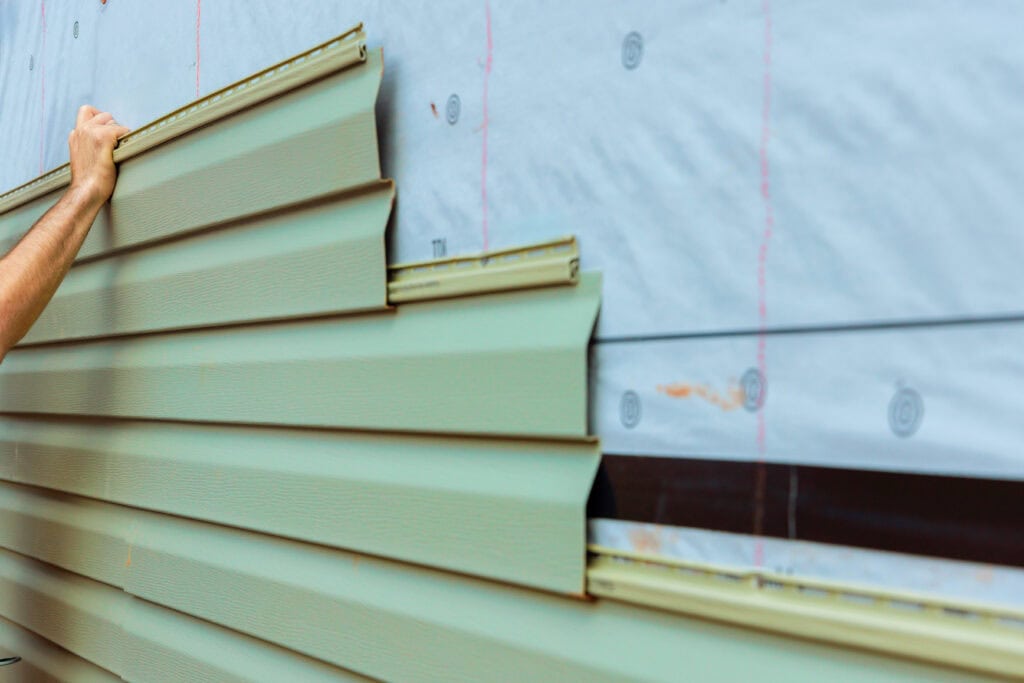Choosing the right type of siding for your home’s exterior is a very important decision that can impact its aesthetic appeal and the maintenance of your property. With so many options available, understanding the pros and cons of the different siding materials can help you make an informed choice that suits your style, budget, and climate considerations.
Vinyl Siding
Vinyl siding is among the most popular choices for homeowners due to its affordability, versatility, and availability. Made from PVC resin, it comes in a wide array of colors and styles, some even mimicking the appearance of wood. Here is an overview of the pros and cons of choosing vinyl siding for your home:
Pros of Vinyl Siding
- Cost-Effective: Vinyl is generally less expensive than other siding options.
- Low Maintenance: This type of siding generally only needs the occasional surface cleaning.
- Durability: Vinyl siding is strong and resistant to pests and moisture.
Cons of Vinyl Siding
- Aesthetic Limitations: Despite advancements, vinyl may not fully replicate the texture and depth of natural wood.
- Environmental Impact: Production and disposal of PVC can have ecological drawbacks.
- Temperature Sensitivity: Extreme temperatures can cause vinyl to crack or warp over time.
Wood Siding
Wood siding is a timeless and natural choice, particularly popular in coastal areas. Available in various styles, such as clapboard, shingles, and shakes, it matches a traditional aesthetic.
Pros of Wood Siding
- Aesthetic Appeal: Wood is warm and traditional in appearance.
- Customizable: It can be painted or stained virtually any color, allowing for personalized design.
- Eco-Friendly: Sourced sustainably, wood is a biodegradable, renewable resource.
Cons of Wood Siding
- High Maintenance: Wood is vulnerable to moisture and pests, so this kind of siding requires a lot of maintenance.
- Susceptibility: Wood tends to rot, attract insects, and catch fire if not properly treated and maintained.
- Cost: Generally more expensive both in material and upkeep compared to some alternatives.
Fiber Cement Siding
Composed of cement, sand, and cellulose fibers, fiber cement siding is known for its durability and versatility. It can mimic the appearance of wood, stucco, or masonry.
Pros of Fiber Cement Siding
- Durability: This kind of siding is resistant to fire, termites, and rot, making it a long-lasting option.
- Low Maintenance: Fiber cement holds onto paint molecules well, reducing the need for repainting and touch-ups.
- Aesthetic Versatility: This kind of siding is available in various textures and styles to suit different architectural designs.
Cons of Fiber Cement Siding
- Installation Complexity: Cement is incredibly heavy, particularly compared to other siding materials. This means installation can be challenging and should only be done by an experienced professional.
- Cost: While durable, the initial investment is higher than some other siding options, like vinyl.
Metal Siding
Metal siding is made from aluminum or steel. This kind of siding offers durability while matching a modern, contemporary aesthetic.
Pros of Metal Siding
- Durability: Metal siding is resistant to fire, insects, and rot and can withstand harsh weather conditions.
- Low Maintenance: Aluminum and steel are low-maintenance materials.
- Recyclable: Metal siding is environmentally friendly due to its recyclability.
Cons of Metal Siding
- Cost: Metal siding is generally more expensive than vinyl or wood options.
- Denting: This kind of siding is susceptible to dents and scratches, which can be challenging to repair.
- Thermal Conductivity: Metal naturally conducts heat, which can potentially impact energy efficiency without proper insulation.
Stucco Siding
Stucco is a cement-based material applied in layers over a lath framework. Its distinctive textured look is popular in many homes in the western US.
Pros of Stucco Siding
- Fire Resistance: Stucco provides excellent fire-resistant properties.
- Durability: With proper maintenance, stucco can last for many years with minimal need for repair.
- Aesthetic Appeal: Stucco offers a unique look for homeowners.
Cons of Stucco Siding
- Installation Cost: Stucco requires skilled labor for installation.
- Cracking: Earthquakes and foundation settling can cause the cement to crack.
- Moisture Sensitivity: It is not ideal for wet climates as prolonged exposure to moisture can cause issues.
Stone and Brick Veneer
Stone and brick veneers provide the appearance of solid masonry without the associated weight and cost.
Pros of Stone and Brick Veneer
- Aesthetic Appeal: This kind of siding offers a high-end, classic look with various styles and colors.
- Durability: It is resistant to fire, pests, and weather-related damage.
- Low Maintenance: The veneer is relatively low maintenance compared to wood siding.
Cons of Stone and Brick Veneer
- Cost: This kind of siding has a higher material and installation cost compared to vinyl.
- Installation Complexity: Professional installation is required to ensure structural integrity and proper moisture barriers.
Making Your Decision
When choosing siding for your home, consider factors such as climate, maintenance commitment, aesthetic preference, and budget. Consulting with professionals like B&E Home Renovations can provide personalized guidance tailored to your specific needs and local conditions. Their expertise in exterior renovations ensures that your home looks appealing and stands resilient against environmental challenges.
Partner with B&E!
For more information on siding options and to explore how B&E Home Renovations can assist in transforming your home’s exterior, visit our website or contact our team today.

